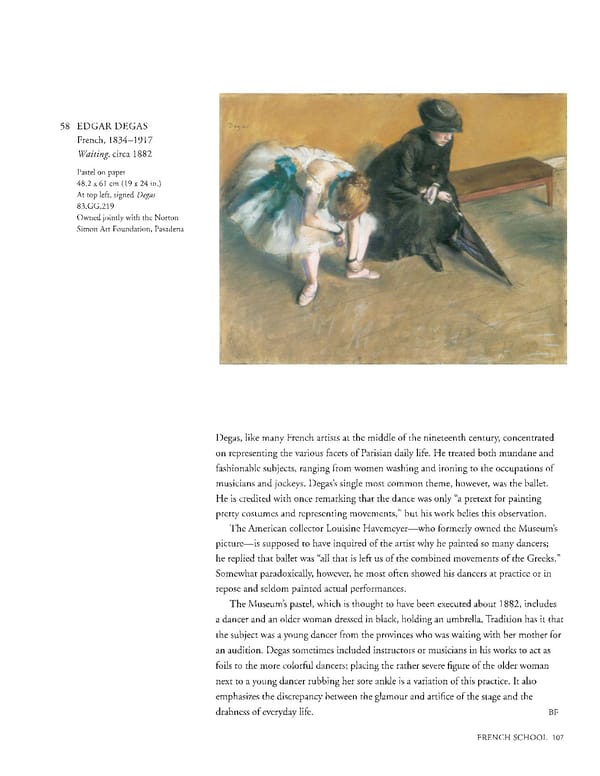58 EDGAR DEGAS French, 18341917 Waiting, circa 1882 Pastel on paper 48.2 x 61 cm (19 x 24 in.) At top left, signed Degas 83.GG.219 Owned jointly with the Norton Simon Art Foundation, Pasadena Degas, like many French artists at the middle of the nineteenth century, concentrated on representing the various facets of Parisian daily life. He treated both mundane and fashionable subjects, ranging from women washing and ironing to the occupations of musicians and jockeys. Degas's single most common theme, however, was the ballet. He is credited with once remarking that the dance was only "a pretext for painting prerty costumes and representing movements," but his work belies this observation. The American collector Louisine Havemeyer—who formerly owned the Museum's picture—is supposed to have inquired of the artist why he painted so many dancers; he replied that ballet was "all that is left us of the combined movements of the Greeks." Somewhat paradoxically, however, he most often showed his dancers at practice or in repose and seldom painted actual performances. The Museum's pastel, which is thought to have been executed about 1882, includes a dancer and an older woman dressed in black, holding an umbrella. Tradition has it that the subject was a young dancer from the provinces who was waiting with her mother for an audition. Degas sometimes included instructors or musicians in his works to act as foils to the more colorful dancers; placing the rather severe figure of the older woman next to a young dancer rubbing her sore ankle is a variation of this practice. It also emphasizes the discrepancy between the glamour and artifice of the stage and the drabness of everyday life. BF FRENCH SCHOOL 107
 Masterpieces of the Getty Museum: Paintings Page 107 Page 109
Masterpieces of the Getty Museum: Paintings Page 107 Page 109